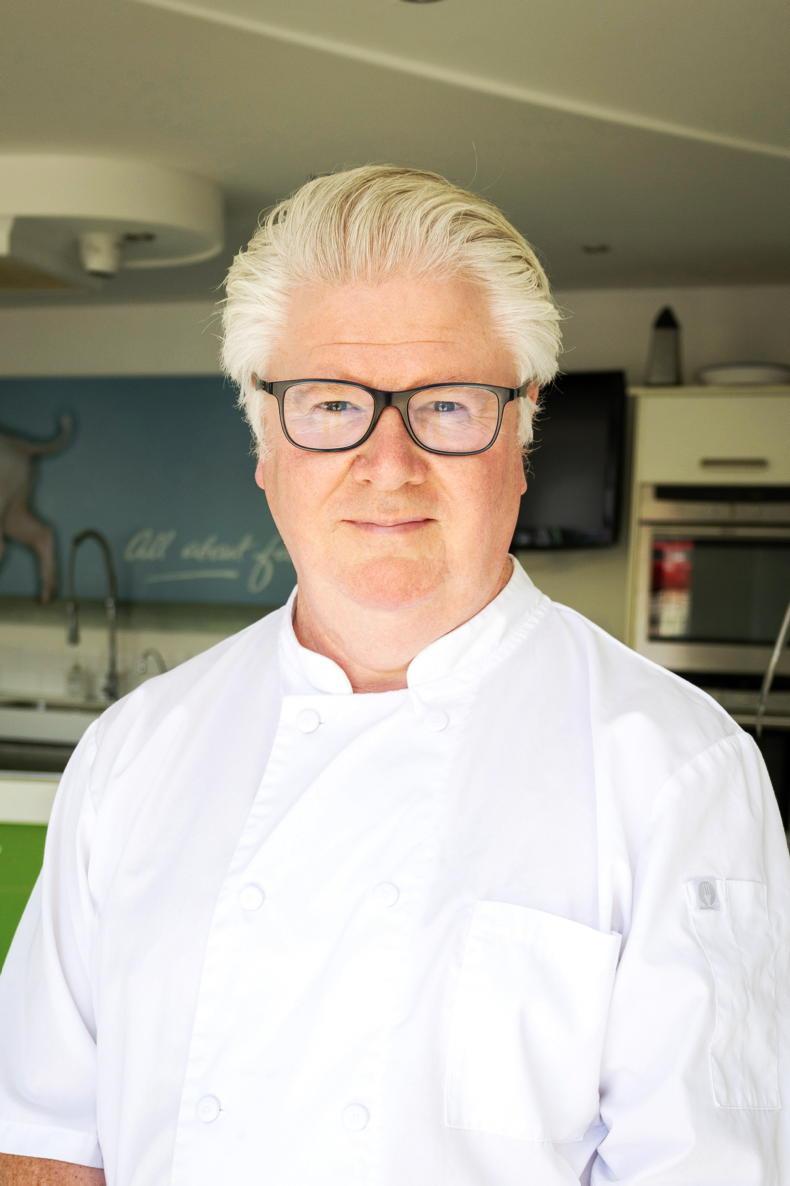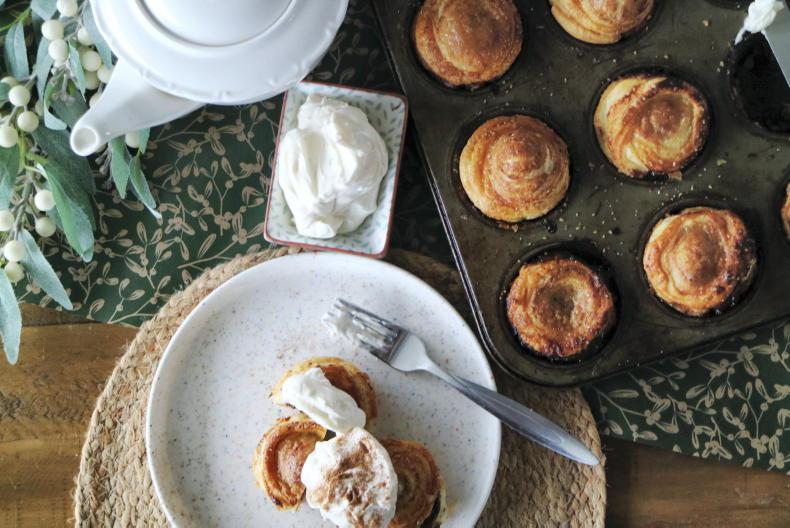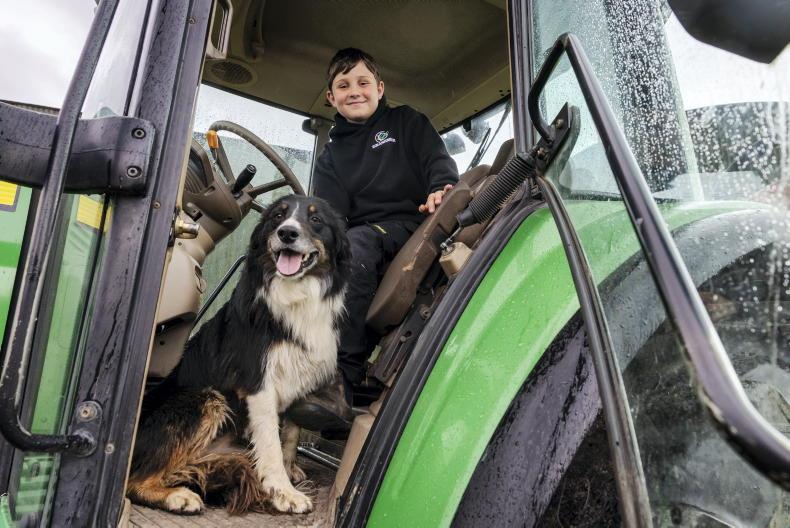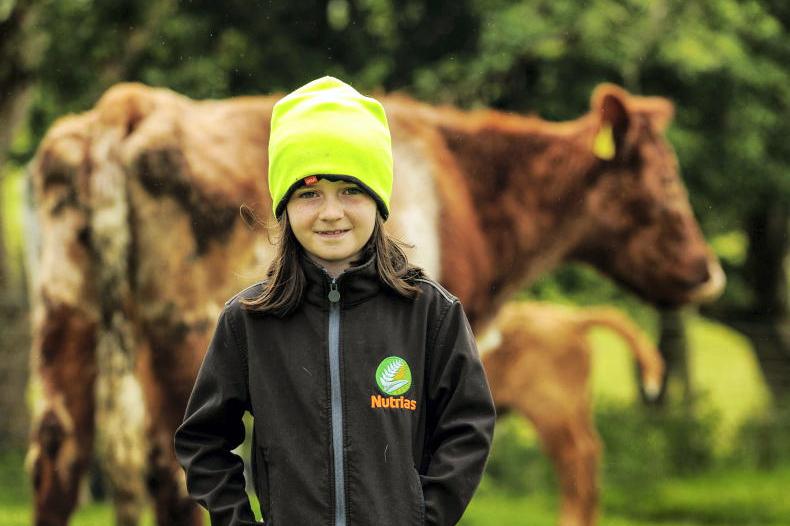How do you like your lamb?
A slow cooked shoulder or a perfectly roasted rump? Maybe you prefer a quick-cooking lamb chop or a cutlet dinner?
The general term of “sheepmeat” includes a group comprised of lamb (under one year of age), hogget (up to two years in age) and mutton (any sheepmeat older than two). While lamb is the most popular of the three types of sheepmeat, hogget and mutton are also enjoyed in many parts of the world and within certain cultures.
In fact, most “lamb” consumed in the United States is coming from animals aged between 12 and 14 months – so technically hogget – while lamb subcategorization also exists in other areas. For example, some countries differentiate milk-fed from weaned lamb or they might categorise lamb based on the area in which they were raised.
In central Italy, abbachio lamb enjoys a PGI (Protected Grographical Indication) status. It is lamb which has only recently been weaned, or is still suckling, and is enjoyed at Easter and Christmas times. Here in Ireland, we have our own PGI status for Connemara Hill Lamb – a slow-maturing lamb whose end flavour benefits from its natural surroundings. In France, salt marsh lamb (or agneau de pré-salé) is lamb which has been grazing on coastal estuary landscapes; which again add to its end flavour.

Seamus McMenamin is sheepmeat and livestock manager at Bord Bia.
International reputation
According to the United Nations Food and Agriculture Organisation, sheepmeat makes up around 5% of global meat consumption. Like all of our agricultural products, Irish lamb is widely enjoyed by consumers all over the world. There are just under 35,000 sheep farmers in Ireland, supporting a breeding flock of 2.6 million ewes, and around 85% of our lamb is exported annually. Seamus McMenamin, Bord Bia’s sheepmeat and livestock manager, says in total 2023 sheepmeat exports were valued at €426 million and sent to over 40 different countries.
“While the EU and the UK are the main markets for Irish sheepmeat, we have a growing reputation in international markets for the quality of the lamb we produce,” he says, while acknowledging the importance of the domestic lamb market.
“There has always been a strong association of lamb with family occasions and weekend meals, with strong sales around Easter and Christmas, for example,” he continues. “Per capita consumption in Ireland holds steady at around 3kg per person [per year].”
Sure, Easter is the time of year we most associate with lamb, but right now – at this time of year – is when it should truly be savoured.
Why? Because while they are still under a year, they have, by now, had some time to develop that depth of flavour which sets Irish lamb apart. Aside from their milk diet, they have now also foraged on grasses and wild herbs and have been exposed to their terroir.
While Irish lamb is regularly available throughout the year, new season lamb, traditionally enjoyed around Easter-time, is born the previous winter. It is milder in flavour thanks to the fact that the lambs have mainly been on an all-ewe-milk diet. This is also why “spring lamb” and its tender meat is favoured by so many international consumers – raised in any other country, that tenderness is its most desirable attribute.
Seamus wants to encourage consumers to eat more Irish lamb outside of those culturally significant times – especially younger consumers, who might not be cooking the Sunday roast dinners. Bord Bia now has a growing focus to highlight the versatility and nutritional benefits of lamb for mid-week meal options.
“The high price point of lamb [relative to other proteins] and a lack of awareness of the product can sometimes be a barrier to purchase for younger consumers on the domestic market,” he explains. “Investment by the major Irish processors and retailers in recent years has seen an increase in the range of value-added and ready-to-cook lamb products available.”

Chef Paul Flynn.
Try lesser cuts
There are countless opportunities to shake up the preparation of lamb. Chef Paul Flynn will be doing cooking demonstrations at the Irish Farmers Journal stand at the National Ploughing Championships. He says he regularly features seasonal lamb on his menus at The Tannery in Dungarvan, Co Waterford and gets more joy from cooking with the “off cuts” than he does the traditional roast leg or rack of lamb.
“Lamb has become expensive, and while we need to understand the farmer’s point of view on that, I actually think it’s fortunate, in a way, because I love using lesser cuts,” he tells Irish Country Living. “We currently have a lamb dish on the menu, but it’s not the rack – it’s the belly. We slow-cook it and brush it with mustard; we keep it really old-fashioned in its preparation and it is so delicious.”
Paul says this is the time of year he most enjoys having Irish lamb on the menu as it has reached its full flavour potential. He feels lucky to have locally-produced hill lamb at his doorstep and will sometimes buy in a half or a quarter lamb to butcher in-house.
“I always love to have it on in season; I never really have it on at Easter [except maybe on a Sunday as a treat],” he explains. “I really look forward to this time of year for Irish lamb. Our Comeragh Mountain Lamb is reared just behind us in Dungarvan and it’s really spectacular; it can be very exciting for a chef when you have a half or a quarter coming in – it really stimulates your creativity.”
Reasons for higher prices
Sheep farming has long been considered a less profitable and more vulnerable sector within Irish agriculture. However, increased demand over the past year (in addition to other factors) has led to a significant increase in the price of Irish lamb.
This time last year, the Irish Farmers Journal reported a butchers’ price of €6.50/kg; this past week, they reported a butchers’ price of €7.50/kg. Co Waterford-based processor and butcher, Darren O’Flynn, says these increases are reflective of the increase in costs across the board.
“Lamb is up in price, but that really only runs with the running facets of everyone’s business,” he says. “Everyone’s costs have increased; the farmers and processors aren’t immune to cost increases, so you can’t expect lamb to stay still on price. It is definitely a premium product.”

Darren O'Flynn, from O'Flynn Butchers in Waterford. \ Claire Nash
Darren, who processes sheep and cattle from all around the country, says sheep farming has become less attractive to younger farmers and in the very near future this is going to put the sector under major pressure. He is also seeing an increase in breeding ewes coming into processing – an indication of our overall diminishing national herd.
“Lamb is facing a lot of challenges and there doesn’t seem to be a whole lot of younger people coming into sheep production,” he says.

Ned Morrissey, from Dunhill, Co Waterford, is a tillage and sheep farmer \ Donal O' Leary
Yields and costs
Ned Morrissey farms in Dunhill, Co Waterford and supplies his lamb to Darren. He echoes Darren’s concerns, saying that while 2024 has been a good year for lamb prices, any profit has largely been “eaten up” by higher operation costs and lower yields.
“From a sales point-of-view, it’s improved roughly, but it didn’t move much in the marketplace in the last two to three years even though our costs increased dramatically,” he says. “So the good prices [this year] gave us a bit of a catch up from the last few years. Now, in 2024 with the poor spring we had, our fatality levels were higher and our costs were higher, as well. So it’s all relative.”
Ned says he is lucky his son has chosen to farm with him unlike so many younger generations who are choosing not to take on the family flock. They breed roughly 400 ewes annually and, as they are lowland farmers, they focus on lowland breeds like Suffolk and Belclare. They sell their lambs locally each year; supplying two other smaller processors alongside Darren.
“We are lucky to sell our lambs locally, I know that’s not an option for a lot of people,” he says. “It suits us and it suits them.”
Seamus acknowledges these challenges within the sector, but remains hopeful regarding the future.
“Poor profitability and some production challenges have contributed to a contraction in ewe numbers in the last few years. However, the current firmness in the lamb trade may help to stimulate an interest in the enterprise from younger farmers and help stabilise this decline.”
Bord Bia will be launching a two-week-long campaign marketing Irish quality assured lamb on 16 September, which will include a mix of TV, social media and influencer activity.
“The foundation of the Irish sheep sector is the small family farm,” Seamus says. “They help support economic activity and employment in rural communities while helping to maintain the biodiversity and beauty of some of our most pristine landscapes.”
Read more
Clodagh's home farm
Sweet exposure: are our children being over-exposed to unhealthy drinks?
How do you like your lamb?
A slow cooked shoulder or a perfectly roasted rump? Maybe you prefer a quick-cooking lamb chop or a cutlet dinner?
The general term of “sheepmeat” includes a group comprised of lamb (under one year of age), hogget (up to two years in age) and mutton (any sheepmeat older than two). While lamb is the most popular of the three types of sheepmeat, hogget and mutton are also enjoyed in many parts of the world and within certain cultures.
In fact, most “lamb” consumed in the United States is coming from animals aged between 12 and 14 months – so technically hogget – while lamb subcategorization also exists in other areas. For example, some countries differentiate milk-fed from weaned lamb or they might categorise lamb based on the area in which they were raised.
In central Italy, abbachio lamb enjoys a PGI (Protected Grographical Indication) status. It is lamb which has only recently been weaned, or is still suckling, and is enjoyed at Easter and Christmas times. Here in Ireland, we have our own PGI status for Connemara Hill Lamb – a slow-maturing lamb whose end flavour benefits from its natural surroundings. In France, salt marsh lamb (or agneau de pré-salé) is lamb which has been grazing on coastal estuary landscapes; which again add to its end flavour.

Seamus McMenamin is sheepmeat and livestock manager at Bord Bia.
International reputation
According to the United Nations Food and Agriculture Organisation, sheepmeat makes up around 5% of global meat consumption. Like all of our agricultural products, Irish lamb is widely enjoyed by consumers all over the world. There are just under 35,000 sheep farmers in Ireland, supporting a breeding flock of 2.6 million ewes, and around 85% of our lamb is exported annually. Seamus McMenamin, Bord Bia’s sheepmeat and livestock manager, says in total 2023 sheepmeat exports were valued at €426 million and sent to over 40 different countries.
“While the EU and the UK are the main markets for Irish sheepmeat, we have a growing reputation in international markets for the quality of the lamb we produce,” he says, while acknowledging the importance of the domestic lamb market.
“There has always been a strong association of lamb with family occasions and weekend meals, with strong sales around Easter and Christmas, for example,” he continues. “Per capita consumption in Ireland holds steady at around 3kg per person [per year].”
Sure, Easter is the time of year we most associate with lamb, but right now – at this time of year – is when it should truly be savoured.
Why? Because while they are still under a year, they have, by now, had some time to develop that depth of flavour which sets Irish lamb apart. Aside from their milk diet, they have now also foraged on grasses and wild herbs and have been exposed to their terroir.
While Irish lamb is regularly available throughout the year, new season lamb, traditionally enjoyed around Easter-time, is born the previous winter. It is milder in flavour thanks to the fact that the lambs have mainly been on an all-ewe-milk diet. This is also why “spring lamb” and its tender meat is favoured by so many international consumers – raised in any other country, that tenderness is its most desirable attribute.
Seamus wants to encourage consumers to eat more Irish lamb outside of those culturally significant times – especially younger consumers, who might not be cooking the Sunday roast dinners. Bord Bia now has a growing focus to highlight the versatility and nutritional benefits of lamb for mid-week meal options.
“The high price point of lamb [relative to other proteins] and a lack of awareness of the product can sometimes be a barrier to purchase for younger consumers on the domestic market,” he explains. “Investment by the major Irish processors and retailers in recent years has seen an increase in the range of value-added and ready-to-cook lamb products available.”

Chef Paul Flynn.
Try lesser cuts
There are countless opportunities to shake up the preparation of lamb. Chef Paul Flynn will be doing cooking demonstrations at the Irish Farmers Journal stand at the National Ploughing Championships. He says he regularly features seasonal lamb on his menus at The Tannery in Dungarvan, Co Waterford and gets more joy from cooking with the “off cuts” than he does the traditional roast leg or rack of lamb.
“Lamb has become expensive, and while we need to understand the farmer’s point of view on that, I actually think it’s fortunate, in a way, because I love using lesser cuts,” he tells Irish Country Living. “We currently have a lamb dish on the menu, but it’s not the rack – it’s the belly. We slow-cook it and brush it with mustard; we keep it really old-fashioned in its preparation and it is so delicious.”
Paul says this is the time of year he most enjoys having Irish lamb on the menu as it has reached its full flavour potential. He feels lucky to have locally-produced hill lamb at his doorstep and will sometimes buy in a half or a quarter lamb to butcher in-house.
“I always love to have it on in season; I never really have it on at Easter [except maybe on a Sunday as a treat],” he explains. “I really look forward to this time of year for Irish lamb. Our Comeragh Mountain Lamb is reared just behind us in Dungarvan and it’s really spectacular; it can be very exciting for a chef when you have a half or a quarter coming in – it really stimulates your creativity.”
Reasons for higher prices
Sheep farming has long been considered a less profitable and more vulnerable sector within Irish agriculture. However, increased demand over the past year (in addition to other factors) has led to a significant increase in the price of Irish lamb.
This time last year, the Irish Farmers Journal reported a butchers’ price of €6.50/kg; this past week, they reported a butchers’ price of €7.50/kg. Co Waterford-based processor and butcher, Darren O’Flynn, says these increases are reflective of the increase in costs across the board.
“Lamb is up in price, but that really only runs with the running facets of everyone’s business,” he says. “Everyone’s costs have increased; the farmers and processors aren’t immune to cost increases, so you can’t expect lamb to stay still on price. It is definitely a premium product.”

Darren O'Flynn, from O'Flynn Butchers in Waterford. \ Claire Nash
Darren, who processes sheep and cattle from all around the country, says sheep farming has become less attractive to younger farmers and in the very near future this is going to put the sector under major pressure. He is also seeing an increase in breeding ewes coming into processing – an indication of our overall diminishing national herd.
“Lamb is facing a lot of challenges and there doesn’t seem to be a whole lot of younger people coming into sheep production,” he says.

Ned Morrissey, from Dunhill, Co Waterford, is a tillage and sheep farmer \ Donal O' Leary
Yields and costs
Ned Morrissey farms in Dunhill, Co Waterford and supplies his lamb to Darren. He echoes Darren’s concerns, saying that while 2024 has been a good year for lamb prices, any profit has largely been “eaten up” by higher operation costs and lower yields.
“From a sales point-of-view, it’s improved roughly, but it didn’t move much in the marketplace in the last two to three years even though our costs increased dramatically,” he says. “So the good prices [this year] gave us a bit of a catch up from the last few years. Now, in 2024 with the poor spring we had, our fatality levels were higher and our costs were higher, as well. So it’s all relative.”
Ned says he is lucky his son has chosen to farm with him unlike so many younger generations who are choosing not to take on the family flock. They breed roughly 400 ewes annually and, as they are lowland farmers, they focus on lowland breeds like Suffolk and Belclare. They sell their lambs locally each year; supplying two other smaller processors alongside Darren.
“We are lucky to sell our lambs locally, I know that’s not an option for a lot of people,” he says. “It suits us and it suits them.”
Seamus acknowledges these challenges within the sector, but remains hopeful regarding the future.
“Poor profitability and some production challenges have contributed to a contraction in ewe numbers in the last few years. However, the current firmness in the lamb trade may help to stimulate an interest in the enterprise from younger farmers and help stabilise this decline.”
Bord Bia will be launching a two-week-long campaign marketing Irish quality assured lamb on 16 September, which will include a mix of TV, social media and influencer activity.
“The foundation of the Irish sheep sector is the small family farm,” Seamus says. “They help support economic activity and employment in rural communities while helping to maintain the biodiversity and beauty of some of our most pristine landscapes.”
Read more
Clodagh's home farm
Sweet exposure: are our children being over-exposed to unhealthy drinks?













SHARING OPTIONS